What’s New
Archives
Delta Air Lines Inaugurates New Pilot Training Center in Salt Lake City
Delta Air Lines has officially opened its state-of-the-art Pilot Training Center in Salt Lake City, making it the airline’s only training facility outside its headquarters in Atlanta, Georgia. The grand opening ceremony featured notable leaders, including Governor Cox and Mayor Mendenhall, along with Delta’s Chief Executive Officer and Chief Operating Officer.
MHTN Architects had the pleasure of being entrusted with Delta’s vision for this innovative facility, crafting a design that embodies the airline’s forward-thinking approach to training and technology.

The newly established Delta Air Lines Multi-Stakeholder Training Building reflects the airline’s brand through its contemporary architectural design. The building’s exterior features white Aluminum Composite Metal Panels accented with Delta’s signature red and extensive glazing, creating a modern and precise geometric layout. Its large simulator bay doors, proportionally scaled and functional, include clerestory windows that enhance the side elevations. The west facade, with its expansive glazed wall, not only provides scenic views but also serves as an intuitive way-finding element, designed to integrate seamlessly with future phases of the facility as it evolves into an inner courtyard.


Upon entering the building through its northeast corner, visitors encounter subtle yet impactful references to aviation. From canopies detailed to resemble wing structures to murals showcasing Delta Air Lines imagery, the lobby exudes a strong aviation theme. Further into the east hallway, a glass wall reveals additional graphics visible from Wright Brothers Drive, while the employee break room and outdoor patio create an inviting and functional space for both employees and visitors.
The 50,000-square-foot facility is equipped with advanced technology to enhance pilot training. Highlights include a FlightSafety Airbus A350 simulator, four procedure trainers for qualification training, ten briefing rooms, and seven classrooms. Plans are already underway to add simulators for the Airbus A320 and Boeing B737, underscoring Delta’s commitment to remaining a leader in aviation training innovation.
The training center’s simulators offer pilots a fully immersive in-flight experience, from the G-forces of takeoff to navigating turbulence. This level of realism prepares pilots for the challenges of modern air travel, ensuring the highest standards of safety and expertise.


A Boost for Salt Lake City’s Economy
The Delta Air Lines Pilot Training Center is expected to host over 1,000 training sessions each month, resulting in 1,000 hotel stays per month in the Salt Lake City area. This influx of visitors will significantly benefit the local hospitality, dining, and transportation industries. Additionally, the center has created new jobs across various sectors, from construction and maintenance to highly specialized aviation training roles.
By establishing this facility, Delta Air Lines strengthens its longstanding partnership with Salt Lake City International Airport, positioning the city as a critical hub in the airline’s global operations. This not only enhances the airport’s reputation but also attracts future investments, fostering sustained economic growth and solidifying Salt Lake City’s role as a key player in the aviation industry.
We are excited to announce the opening of Park City High School’s new Career and Technical Education (CTE) wing, an innovative addition that aligns with the District’s vision of creating “A Place for All.” This state-of-the-art facility not only supports the PCCAPS (Park City Center for Advanced Professional Studies) program but also strengthens the connection between education and the evolving needs of the community. Designed with a focus on real-world learning, this addition provides specialized environments such as a construction lab, robotics and aviation studios, a commercial culinary kitchen, healthcare training spaces, and business labs—offering students a variety of pathways to explore careers in high-demand industries. The innovative design of the CTE wing prepares students to make meaningful contributions to the workforce while fulfilling the community’s need for skilled professionals.
The project is a successful design-build collaboration between Hogan Construction and MHTN Architects project and is a testament to Park City School District’s guiding principles of creating learning-centered spaces that are flexible, adaptable, and inclusive. The CTE wing was designed to foster strong relationships between students, educators, and industry partners, promoting a positive and healthy school environment where every student can thrive. With flexible spaces that can evolve as educational needs change, the wing supports collaboration, creativity, and hands-on learning while offering a welcoming environment for all students. We are proud to have been part of this project that not only enhances education but also nurtures a sense of belonging, preparing students for successful futures in both their personal and professional lives.
Inaugurated just a year ago, the Utah State University (USU) Moab Academic Building was envisioned with a profound commitment to sustainability. Today, this remarkable facility not only fulfills its ambitious goal of achieving net-zero energy status but proudly stands as a net-positive building.

A net-zero building relies entirely on renewable energy resources, producing as much energy as it consumes. The USU Moab Academic Building surpasses this achievement by generating surplus energy beyond its own needs. Over the course of a year, the solar panels installed as a roof for the parking lot generated 283 MWh, with the facility only consuming 220 MWh, Utah State University was able to sell the remaining 62.5MWh to Rocky Mountain Power.
This remarkable accomplishment was made possible by setting sustainability goals from the beginning of the design process. Clear communication between stakeholders and architects enabled the implementation of energy-saving strategies, such as optimizing the building’s orientation to maximize natural light, incorporating shaded roof overhangs, utilizing high-performance glazing, efficient lighting, and HVAC systems, and employing above-standard insulation values.
The USU Moab Academic Building, an emblem of MHTN Architects’ commitment to sustainable design, has received numerous awards, including the “Most Outstanding Green/Sustainable Project” from Utah Construction & Design, the “Best Higher Education Project” from IIDA Intermountain, and the “Green Building Award of Excellence” from the Associated General Contractors of Utah, among many others.
With this achievement, the USU Moab Academic Building transcends conventional architectural boundaries and redefines the essence of sustainable design, setting the standard for a new growing campus. MHTN Architects, in collaboration with Utah State University, has charted a path toward a more environmentally conscious future, where buildings can contribute positively to their surroundings while adhering to rigorous sustainability standards. The USU Moab Academic Building is a testament to the possibilities of sustainable design, serving as an exemplar and inspiration for future architectural endeavors.
The Impact and Prosperity Epicenter, also affectionately known as the Epicenter, will be a new multidisciplinary hub for social impact, community engagement, and enterprise, empowering social entrepreneurs and organizations.
MHTN Architects and the Yazdani Studio of CannonDesign have translated the vision for this new student residence. Designed as an ecosystem that will foster a growing network of social impact practitioners, the new facility will act as a nerve center that equips students with the knowledge, experience, and vision required to change the world.

The facility brings both the Sorenson Impact center and the Business, Health and Prosperity Center under one roof, providing unique opportunities to support each other in their shared vision and mission for the betterment of people and the planet.
It will be a living-learning space for undergraduate and graduate business students, promoting social impact through community management and entrepreneurship, “where everyone comes together for nourishment & community”. The residents will be motivated self-starters, persistent and resourceful, committed, globally motivated, innovative thinkers, selfless, socially driven, entrepreneurial, team players and energetic, open-minded students. It will be the only student residence in the country 100% dedicated to impact.
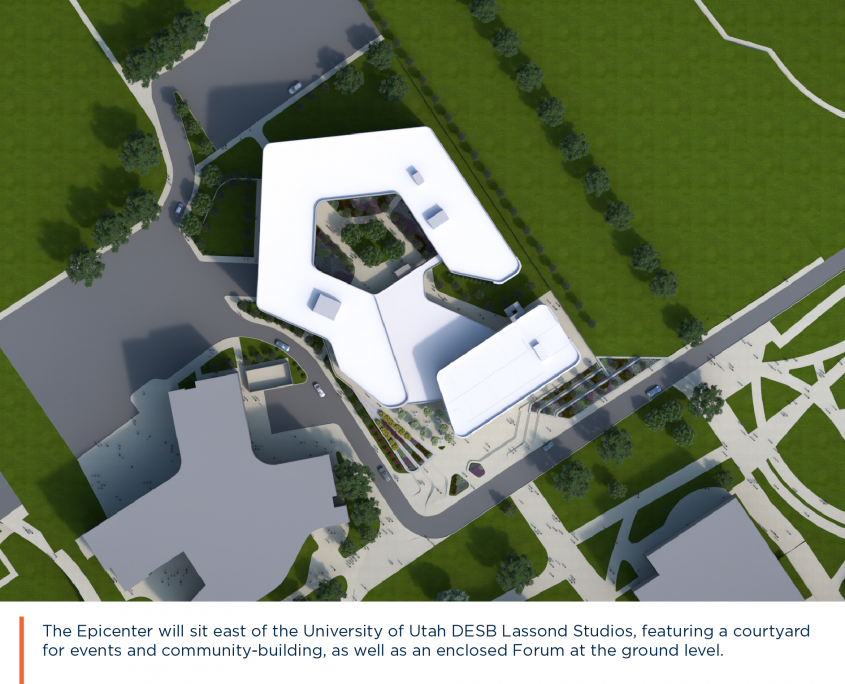
Nonhierarchical, open, collaborative spaces will encourage organic social networking, sharing ideas across new ways of communication and empowering students to become leaders full of social purpose and powerful global citizens.
The 284,808 square feet centrally located building will provide housing to 775 international students and non-governmental organization (NGO) leaders in apartment and individual room settings, with 90+ parking stalls to the north of the facility. With almost 360 degrees unobstructed view of the campus, city and mountains, reinforcing the strong architectural presence of the building on campus.
The facility intends to create a sense of neighborhood and a strong connection with its neighbor, Lassonde Studios, through the form of its building and landscape design. The Epicenter entry plaza on the south accessed from HPER Mall and connecting to Lassonde’s entry plaza, is designed as a very intentional and very active and attractive outdoor space.
The David Eccles School of Business Impact & Prosperity Epicenter will be open for students in August 2024. This project was designed by MHTN Architects in association with Yazdani Studio of CannonDesign.
MHTN Architects – Architect of Record/Student Life
Yazdani Studio of CannonDesign – Design Architect
Canyons School District has opened the doors to their newest elementary, Glacier Hills Elementary School. This unique K-12 project combined two smaller schools into one larger 94,750 SF building that will serve up to 850 students. Flexible learning communities are built with additional program space to support the District’s Brain Booster programs and the new school also includes a youth center addition focused on emotional and mental health of elementary age students.
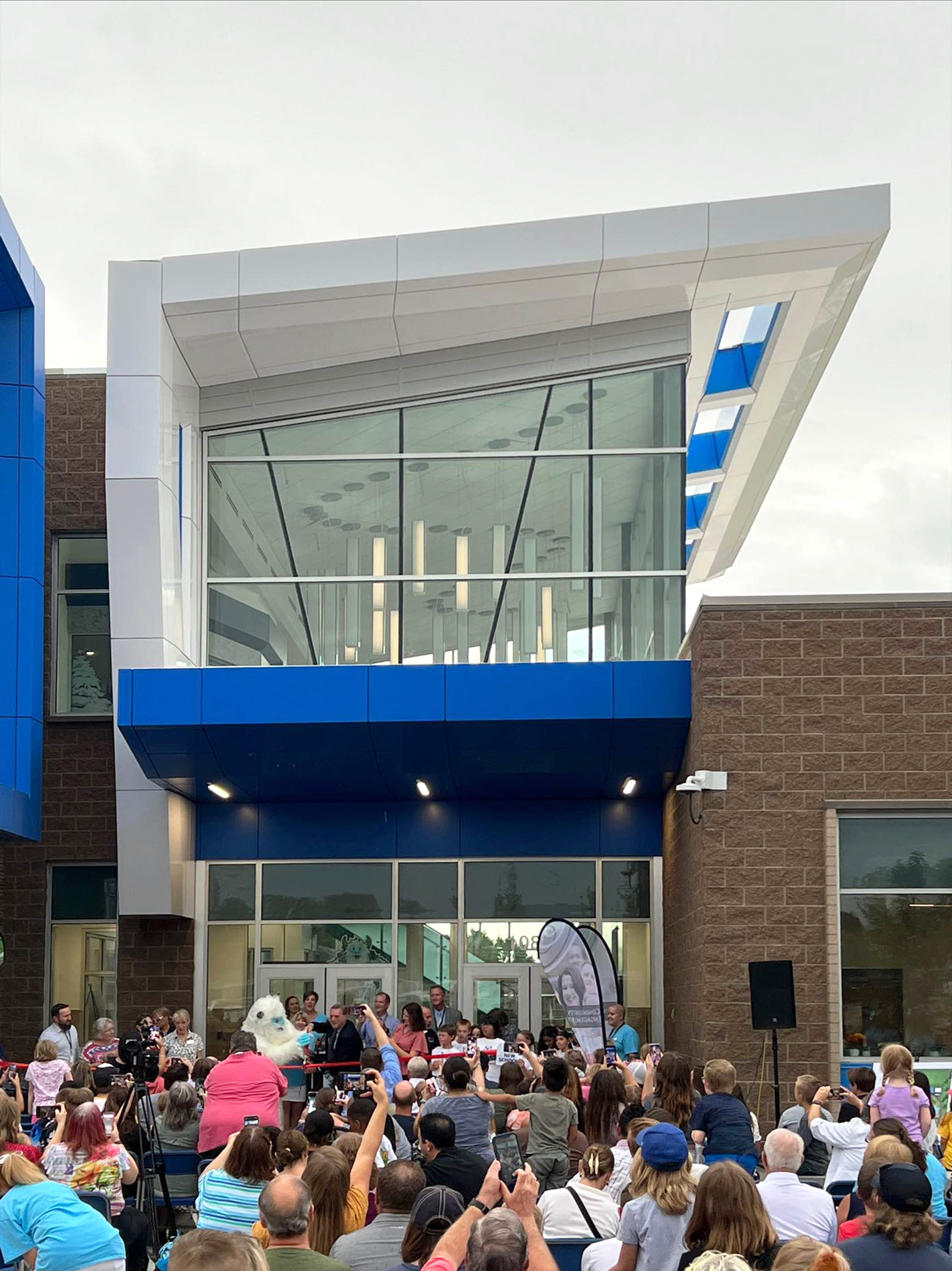
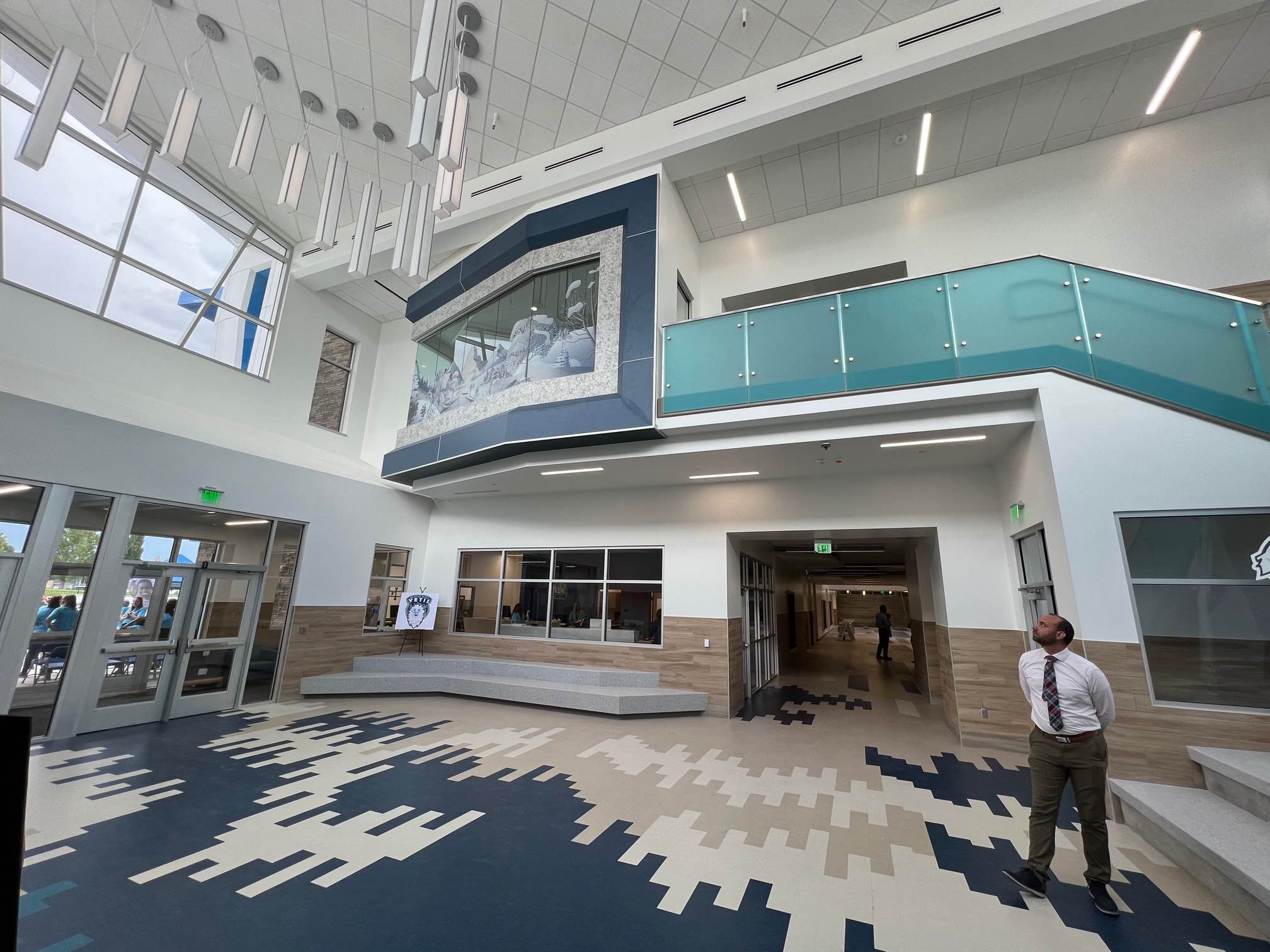
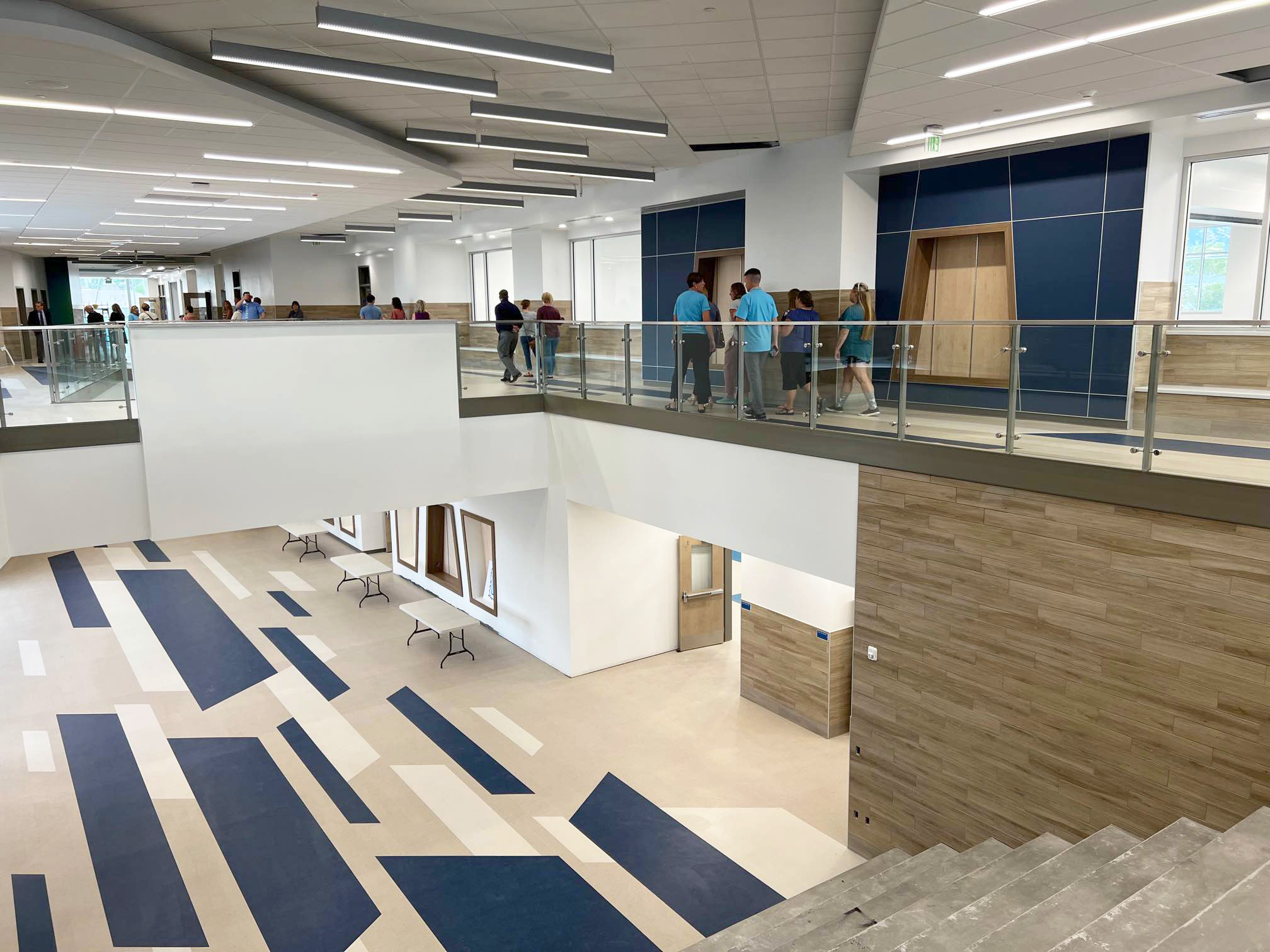
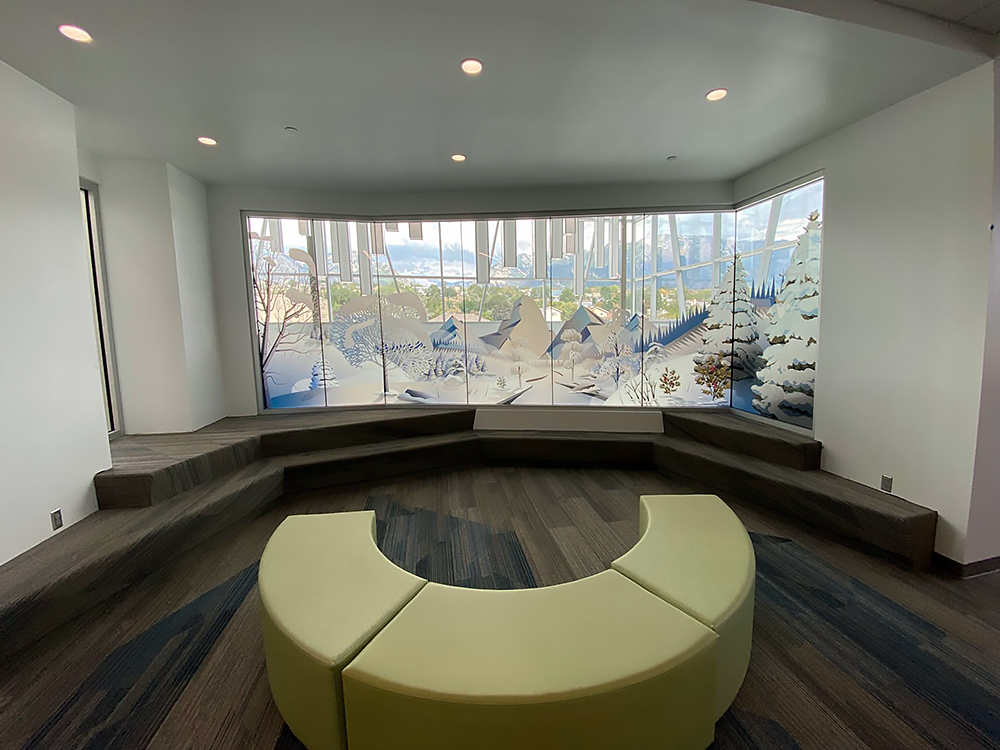
Congratulations to MHTN’s Latest Advancements:
- Curtis Bingham, Project Manager;
- Ed Zaugg Associate, Sustainable Strategies;
- James Knight, Associate, Aviation Environments;
- Joel Burkhart, Project Manager;
- Kristine Larsen, Associate, Contracts Implementation Specialist; and
- Tyson Stevens, Associate, Project Delivery.
Our West Bountiful Elementary and East Ridge Elementary projects have been recognized as the IIDA Intermountain Best and Merit Award Winners in the “Learn” Category.
These projects showcase the imaginative design of our K-12 learning environments. From the custom-designed graphics, to the engaging use of colors and finishes, to the high-quality learning spaces, these schools epitomize the creative and client-centered design efforts that are a foundation of MHTN Architects.
Congrats to all team members involved in these projects, and to the school districts, teachers, students, and local communities, our valued partners that have pioneered the design of these newest educational facilities that will serve generations to come.
Kyle has been an integral part of MHTN for the past 34 years. In his tenure at MHTN, Kyle led the efforts of many significant projects in several Utah School Districts, numerous Higher Education campuses, regionally and nationally, and various temple projects for the Church of Jesus Christ of Latter-Day Saints temples, domestically and internationally. Kyle helped to build MHTN’s Student Life Team, cultivating and mentoring our team’s expertise, particularly in university student unions.
On behalf of everyone at MHTN, we wish Kyle the best in all future endeavors!
MHTN’s West Bountiful Elementary School has been recognized with Learning By Design’s Grand Prize Award.
The 65,000 SF, two-story educational facility is an on-site school replacement that features several learning environments in an open, collaborative space. The design promotes a variety of learning activities while learning studios easily open to a shared community space with sliding doors that transforms the learning environment in a simple and affordable way.
Our K-12 Team collaborated with numerous stakeholders when designing the school including local community leaders, school parent councils, and the city council. When meeting with West Bountiful’s students, our team created a special activity asking each child to imagine what the world should look like in 50 years. Bringing these ideas together, MHTN has developed a student-focused program and building that will be able to adapt to future educational needs.
Alongside the local community, MHTN also prioritized sustainability when designing the new school. West Bountiful is a zero-energy building featuring a photovoltaic array on the roof to generate the building’s entire electrical demand, classrooms oriented to maximize natural daylight, and high-tech mechanical systems that improve overall efficiency.









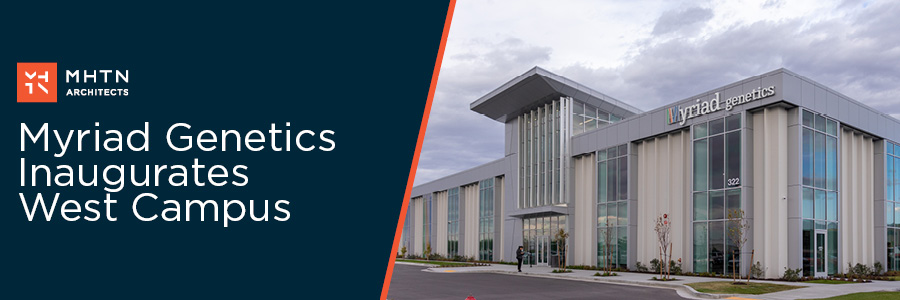
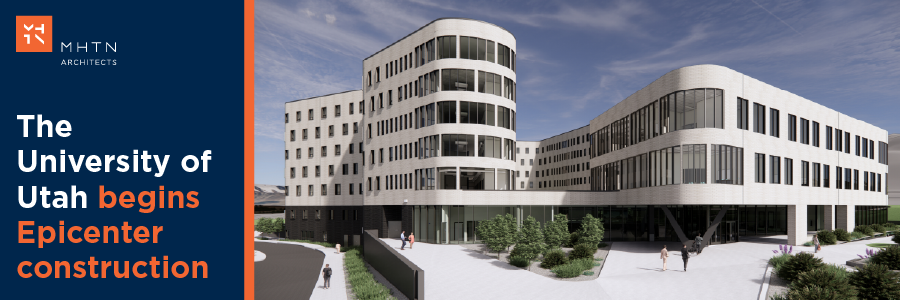
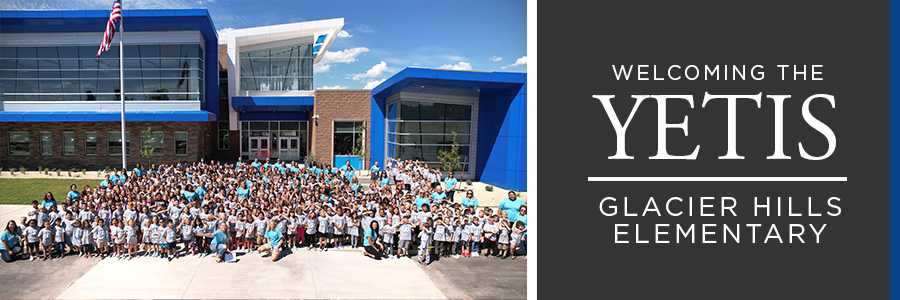




University of Utah Breaks Ground on Public-Private Partnership Housing Project
The University of Utah, in partnership with American Campus Communities (ACC), broke ground on its first public-private partnership (P3) housing development. This $155 million project marks a transformative first step in the university’s vision of “college town magic.” The goal is to create vibrant, student-centered residential environments that foster academic success and fulfill the ambition of building up to 5,000 additional beds on campus over the next five to ten years.
“[This Project] reflects the University’s commitment to growth and to innovation and to serving the students of the University of Utah” said The University’s Chief Operating Officer Jeff Labrum in his celebratory speech.
James E. Wilhelm III, Chief Development Officer at American Campus Communities (ACC) was also present at the event and shared insight on ACC’s involvement in the project “The American campus team, along with our Blackstone colleagues, are very excited that we are investing in the transformation, the fundamental change from a commuter institution to a residential university. We are excited to be a part of a growing, thriving part of the country with the same aspects being applied to the university.”
MHTN Architects, recognized nationally as a leader in student life and higher education design, has partnered with Ayer Saint Gross Architects to deliver a design that integrates natural inspiration with student-centered functionality. Together, the firms have crafted a space that supports diverse aspects of student life, promoting a sense of belonging, well-being, and engagement.
MHTN Architects has long been a trusted partner in shaping student-focused environments across the nation, with a portfolio that includes innovative projects for multiple universities. By collaborating with Ayer Saint Gross Architects, a firm renowned for its expertise in educational master planning, MHTN ensures that the University of Utah’s housing project aligns with both the university’s values and modern design excellence.
The six-story residence hall, located on a 2.9-acre site, will span approximately 350,000 square feet and accommodate 1,450 first- and second-year students. The project, expected to open in Fall 2026, emphasizes both community and individual needs with an array of thoughtful amenities:
Sustainability is at the core of this project’s design philosophy. The architecture integrates natural materials, energy-efficient technologies, and strategically placed daylighting to create a living environment that is both eco-friendly and comfortable for residents.
The residence hall’s architectural design emphasizes a façade inspired by the natural surroundings of Utah’s Wasatch Mountains. Named “Ascending Stone,” the exterior features a striking combination of vertically oriented metal panels in earthy tones, including browns, bronzes, and rust hues. This colorway is complemented by patinated green highlights that reflect the palette of local landmarks like Stewart Falls.
The materials and textures are thoughtfully designed to generate visual interest and harmonize with the landscape. Large windows maximize natural light while maintaining energy efficiency. These design choices underscore a commitment to sustainability and contextual sensitivity, blending built and natural environments to enrich the student experience.
MHTN’s involvement highlights a commitment to shaping spaces that foster learning and growth. Partnering with Ayer Saint Gross ensures the project embodies local identity while adhering to global best practices in student-centered design. This collaboration highlights MHTN’s leadership in creating environments that capture the essence of “college town magic.”